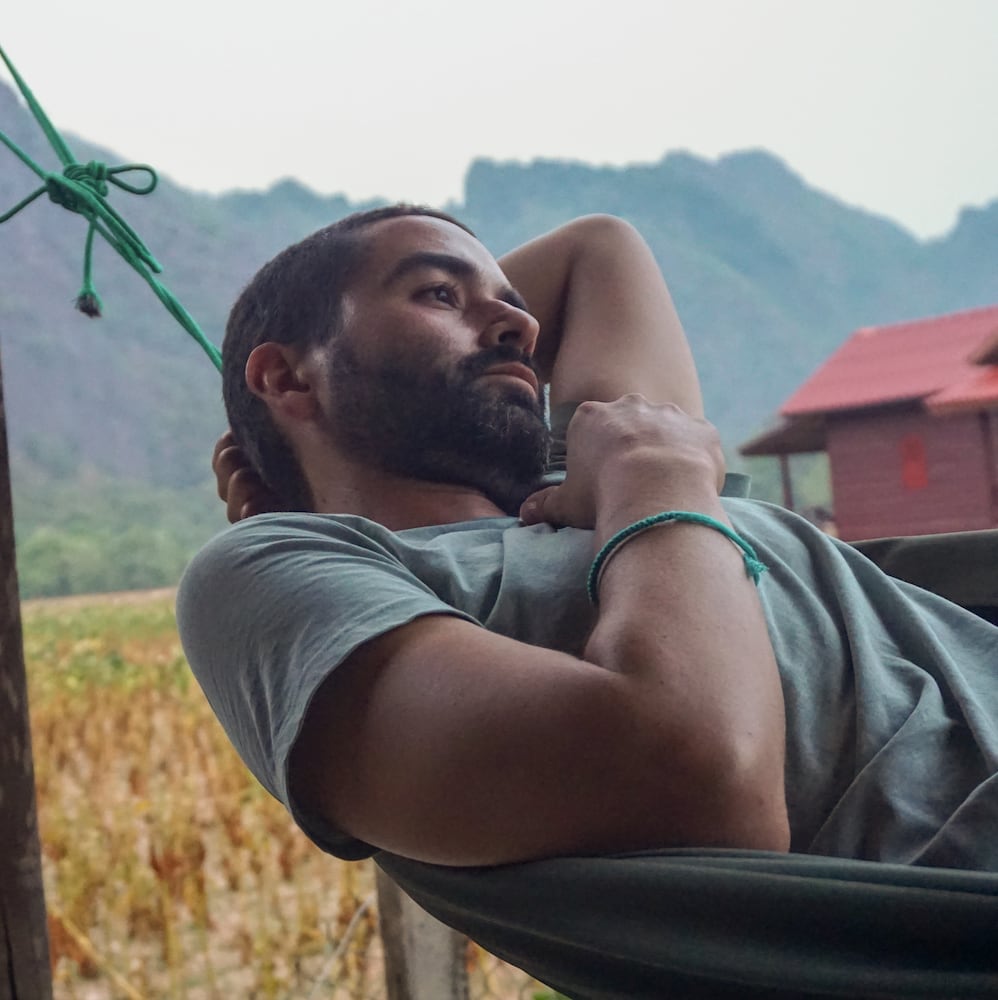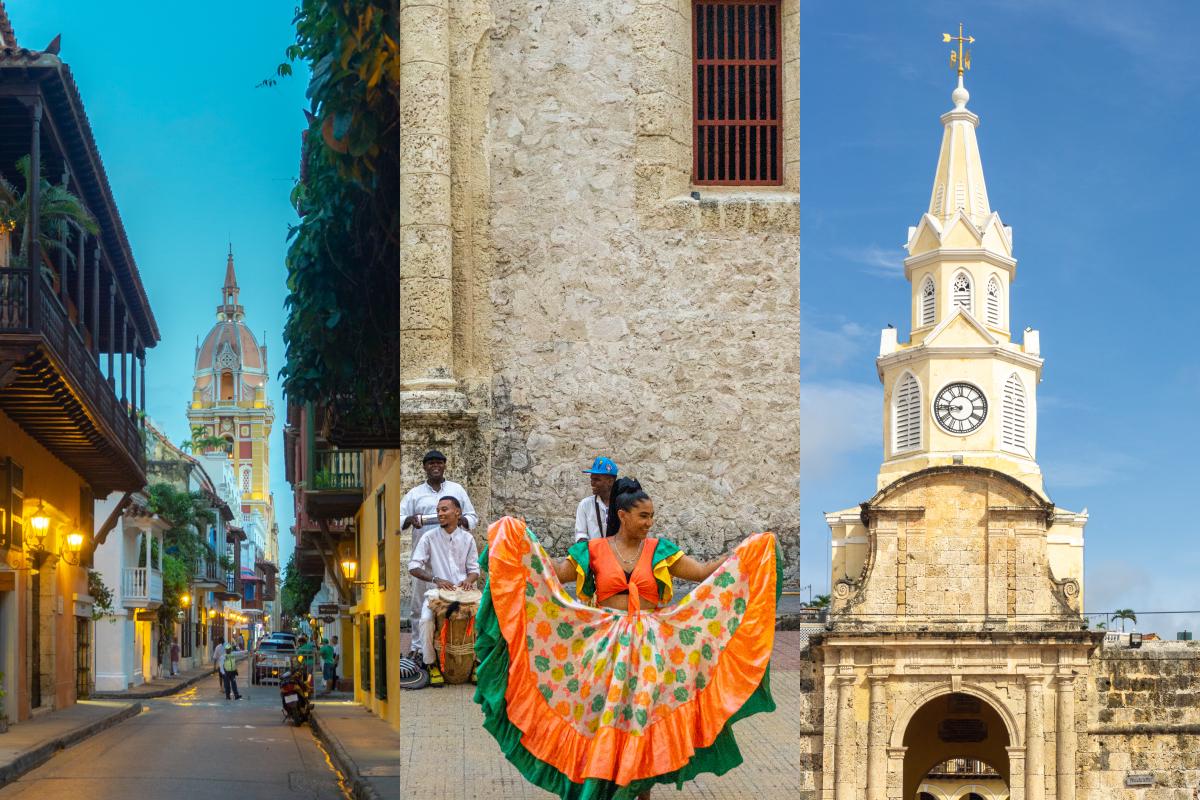Table of Content:
- Best places to eat in Barichara
- Best food to try in Barichara
- Best things to visit in Barichara
- Best places to stay in Barichara
- The history of Camino Real
Nestled on top of the Rio Suarez valley, Barichara is one of Colombia’s 17 Heritage Towns and one of its most popular tourist destinations. Comparatively smaller to other heritage towns in Colombia, Barichara is best experienced by wondering its streets with no specific destination, finding beautiful colonial architecture, valley views, and surprises around each corner.
While there’s no need for itinerary while exploring Barichara, it’s fun to have a couple of reference points to discover while wandering through its streets. The main park being the obvious starting point, is where locals and visitors mingle together while having coffee or a drink. From here, I suggest you head to the cemetery to get a glimpse of the locally sculpted tombstones, crafted by the proud sculptors of the region and often depicting the occupation or a symbolic object from each person’s life.
From the cemetery, head to the street bordering the cliff between Barichara and the Suarez River valley. This street, with multiple restaurants, viewpoints, and parks, offers a wonderful view of the valley, where you can take pictures and enjoy the sunset. Going up the street, you will find the Parque de las Artes, a beautiful park to stroll around and get even wider views of the valley and the town.
Afterwards, walk to the Church of Santa Barbara, where you will find a small market with local treats. Continuing towards the main park, the street is filled with restaurants, stores, and coffee shops.


Barichara is considered one of the most beautiful towns in Colombia. Its orange sandstone gives the whole town a beautiful and dreamy color palette, making this place a must-visit if you are in the Santander region.
The town itself is quiet, except during weekends when many locals come to visit.

When I think of Barichara, I think of marvelous walks along the Camino Real. I think of the town’s wonderful color palette, with its beautiful sandstone, tinting memories with a dreamy, orange vibe. And I remember the freedom felt while driving from my hostal (NOMAD) to town, sunset on the horizon, views of the Suarez valley, Vanessa Zamora live at Border Sky Records on play.
It was during these drives that I met three cool French girls. One Saturday morning, after having a slow breakfast in the beautiful, open space kitchen of the hostel, I was driving to town when I saw two girls waiting for the bus at the entrance of the hostel. I had seen them just before leaving the hostel, so I asked them if they wanted a lift to town. They looked at each other, put out their cigarettes (as French people do), and got inside.
Their names were Marine and Camille. They had just met in the hostel and had plans to get coffee and explore the town. They invited me for coffee at Nona’s. After, while walking through town, we found a pottery workshop at Barro Vivo, where we had a lovely time learning about Barichara’s clay and doing pottery.
Best places to eat in Barichara
⭐️ Nona’s Bread / $$ / Google Maps

This warm and subtly decorated bakery offers artisanal Colombian and European breads, breakfasts, and a fantastic chocolate cake. Its tall roof, warm colors, and relaxed service make it an ideal place to have a snack in the afternoon while watching the main plaza outside.
⭐️ El Compa / $$ / Google Maps
Simple, straightforward, tasty Colombian meals at affordable prices. Try here some of the region’s most typical dishes, such as cabrito (baby goat) and carne oreada (sun-dried beef).
⭐️ Independencia / $$ / Google Maps

Absolutely gorgeous views from the terrace of this bar-restaurant. From here, you can see the whole Suarez valley, ideal to come at sundown for a drink. Better to book in advance to get a table with a view, especially on weekends.
Aljibe / $$ / Google Maps
Cozy bookstore and café in the main park. While it’s hard to get a table sometimes, it’s worth trying. You always have Nona’s just a couple of houses away if you don’t find a spot here.
Traditional food to try in Barichara
Carne Oreada
Salted, sun-dried, and smoked grilled beef. Typically served with baked yuca. Where to eat: El Compa
Queso de hoja
Fresh and soft artisanal cheese wrapped in plantain or bijao (calethea lutea) leaves.
Hormigas Culonas
Hormigas culonas, literally “big-ass ants,” are considered a delicacy in the Santander region. They are toasted, salted, and eaten whole. While most abundant during March and April, they can be found year-round. Where to eat: Santa Barbara Market
Best things to visit in Barichara
Catedral Inmaculada Concepción / Free / Google Maps

At sunset, this 18th-century sandstone cathedral turns into a deep orange. It is this same sandstone that gives Barichara its distinctive look. When remembering this town, it’s hard not to picture this dreamy orange palette in your head. The sandstone, mined a couple of kilometers away from town, can be visited on tours.
Parque Principal / Free / Google Maps
Lined with tall trees, the main park provides shade during the hottest hours of the day. Here, children play at the center sandstone fountain, older folks pass time on park benches, and most often, there is some kind of market or event. It’s most fun to come here in the evening, when townsfolk and visitors come to enjoy the evening with a drink or a treat.
⭐️ Camino Barichara — Guane / Free / Google Maps

Camino Real (royal path) is a historic stone pathway that spans multiple towns in the Santander region and Colombia. The stretch from Barichara to Guane is the only trail in Colombia to be declared as cultural patrimony (“Bien de Interés Cultural”) by the Government.
Spanish conquistadors first laid these stone pathways, in many cases, on trails created by the Guane indigenous tribe 700 to 800 years before their arrival. Today, these royal paths are mainly used for day-walkers and hikers.


From the start of the Camino Real in Barichara, to the next town, Guane, it’s a 6 km walk on this ancient path. The walk takes you through sweeping panoramas of the Suarez River valley before arriving at the sleepy town of Guane. Here, the main park, the main viewpoint, and the Paleontological Museum are the main sights to visit. Remember to take water and protection from the sun during your walk.

⭐️ Parque Para Las Artes / Free / Google Maps

Come to this park for a quiet stroll around sculptures, local fauna, and wide panoramas of the Suarez River valley. From here, you can see how Barichara is nestled on top of a cliff with the entire Suarez River valley below.
Fundación San Lorenzo / $ / Google Maps
Well-known, non-profit artisanal paper workshop, run by a group of single mothers. Here you will get to see and participate in the process of making artisanal paper from fique, a plant with long and meaty leafs similar to the agave plant. An added bonus of visiting this foundation is the private garden at the back, with different local plants and their respective labels, and a couple of benches to relax and enjoy the tranquility of this space.
Santa Barbara Church Market / Google Maps
This market, located in front of Santa Barbara church, consists of a few stands that sell a variety of local and artisanal products. While you can find more stands on weekends, there are usually a few stands throughout the week. Here, you can try some of Santander’s most traditional products, such as “hormigas culonas”, quite literally, big ass ants, a regional delicacy, toasted and lightly salted. Alternatively, you can try Sebajon, an alcoholic beverage made with goat’s milk.
Best places to stay in Barichara
⭐️ NOMAD Hostel / $$ / Booking.com

This Hostel, 15 to 20 minutes away from town, it’s a superb place to be surrounded by nature and disconnect. The facilities are spacious and in open nature. The kitchen, for example, has a great view of the Suarez River valley. There is a restaurant too if you don’t feel like cooking. The hostel is run by kind French couple. To get here and from town, you can hire a moto-taxi.
La Juanita Casa Boutique / $$ / Booking.com

This hostel is located 2 blocks away from the town’s main park. The staff is super friendly and the included breakfast is delicious. One of the best things about this hostel, besides its friendly staff, is the social spaces to share with other travelers. Breakfast is served at a big, shared dinning table, and there are multiple areas to hang out and chat with other travelers, as well as spaces to work on the computer.
Guanes, Spaniards and Germans: The History of Camino Real
Indigenous tribes, Spanish colonizers, and ambitious characters after Colombia’s independence are today responsible for the creation of the Camino Real or Lengerke, a group of ancestral pathways that in some cases, predate the arrival of the Spanish to the country by at least 700 years.
It was the indigenous tribe of the Guanes that first created, not with stone but with their feet, some of these ancestral paths as exchange routes with other indigenous tribes, such as the Muiscas, Arhuacs, and Tayronas. Anthropologists have found traces of Guane activity on current trails, 700 to 800 years before the arrival of the Spanish.
With the arrival of the Spanish in the 1500s, colonizers needed paths to connect Santander with the now territory of Venezuela and the Magdalena River, gateway for passengers, resources, and merchandise to the ocean and onwards to Spain. Using the paths created by the Guanes as a starting point, the Spanish created Royal Pathways, laying stone with the use of salves, first indigenous and then African. Stone pathways helped the safer transit of resources by mule and horses.
In 1862, after the independence of Colombia, regional authorities gave the German Georg Ernst Heinrich von Lengerke the right to modernize royal paths in an effort to boost the economy. Geo von Lengerke, as he was known, improved stone pathways on the now 200-year-old royal paths, built bridges, and create new routes. In turn, he was given rights to charge tolls on these trails for 8 years, together with 200 hectares of uncultivated land.
Today, the main stretches that make up the Lengerke trails are:
San Vicente de Chucurí — Zapatoca (38 km): Starting at the cacao capital of Colombia, and passing through the Yariguies Natural Reserve, this Lengerke stretch takes you to Zapatoca. Only 17 km of the total 38 km are part of the Lengerke trail, the rest being vehicular roads.
Zapatoca — Guane (20 km): Takes through the 2016 renovated stone path and Ruedas bridge, before to tiny town of Guane.
Guane — Barichara (6 km): Declared as cultural patrimony by the government, this strecth takes you through the Suarez Valley to Barichara.
Barichara — Los Santos (31 km): Passes through Villanueva, Jordan and Los Santos. After Villanueva, you’ll get to the top of the Chicamocha Canyon, where your descend all the way to Jordan, and then up the canyon again to Los Santos.

Other resources
- Destino Chicamocha: Some of the most complete guides to hike the Lengerke and Royal paths in Santander.

- Camino Real and Chicamocha Hiking Guide PDF (Spanish): Destino Chicamocha guide detailing information about the Lengerke trails, plus other hiking paths in the region.
- Almas Aventureras: Tour agency offering guided, multi-day hikes along the Lengerke paths.



